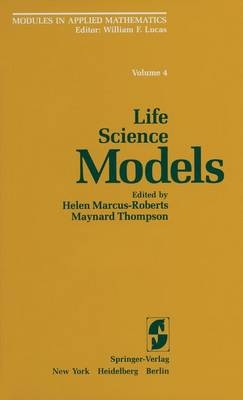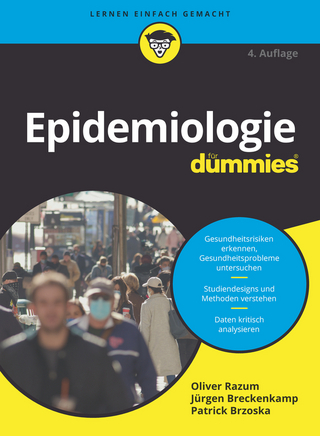
Modules in Applied Mathematics
Springer-Verlag New York Inc.
978-0-387-90739-0 (ISBN)
- Titel ist leider vergriffen;
keine Neuauflage - Artikel merken
I. Population Models.- 1. Population Mathematics.- 1. Introduction.- 2. Formulation of a Model.- 3. A Stable Age Distribution.- 4. Population Waves.- References.- 2. Population Growth: An Age Structure Model.- 1. Introduction.- 2. An Example.- 3. Powers of a Nonnegative Matrix.- 4. Prediction and Implementation.- 5. Conclusion.- Solutions to the Exercises.- References.- Notes for the Instructor.- 3. A Comparison of Some Deterministic and Stochastic Models of Population Growth.- 1. Introduction.- 2. Basic Philosophy of Model Building.- 3. Probability Generating Functions (pgf’s).- 4. Derivation of the General System of Differential Equations for the Pure Birth Process.- 5. Models of Population Growth.- References.- Notes for the Instructor.- 4. Some Examples of Mathematical Models for the Dynamics of Several-Species Ecosystems.- Preface.- 1. Introduction.- 2. Predator-Prey.- 3. Mutualism and Competition.- 4. Some Remarks on N-Species Systems.- Appendix A.- Appendix B: Bibliography.- References.- Appendix C: Suggestions and Solutions.- II. Biomedicine: Epidemics, Genetics, and Bioengineering.- 5. Malaria: Models of the Population Dynamics of the Malaria Parasite.- 1. Introduction.- 2. Malaria.- 3. The First Model.- 4. The Second Model: Survival Proportions.- 5. A Look at Data.- 6. The Third Model: Varying Survival Proportions.- 7. The Fourth Model: Varying Reproduction Numbers.- 8. First Probabilistic Model.- 9. Second Probabilistic Model: Survival Probabilities.- 10. Third Probabilistic Model: Varying Survival Probabilities.- 11. Fourth Probabilistic Model: Varying Reproduction Probabilities.- 12. Discussion.- Exercises.- References.- Notes for the Instructor.- 6. MacDonald’s Work on Helminth Infections.- 1. Introduction.- 2. The Schistosomiasis Model.- 3. The Poisson Probability Distribution.- 4. Calculation of P(m).- 5. Analysis of Equation (6).- Appendix: An Alternate Model.- Appendix: Reprint of MacDonald’s Article.- References.- 7. A Model for the Spread of Gonorrhea.- Exercises.- Notes for the Instructor.- 8. DNA, RNA, and Random Mating: Simple Applications of the Multiplication Rule.- 1. Introduction.- 2. Multiplication Rule.- 3. DNA and RNA.- 4. Random Mating.- Exercises.- References.- Notes for the Instructor.- 9. Cigarette Filtration.- Exercises.- Appendix: Discussion of Density and Flow Rate.- Reference.- Notes for the Instructor.- III. Ecology.- 10. Efficiency of Energy Use in Obtaining Food, I: Humans.- 1. Introduction.- 2. Energy and Food: Some Biological and Physical Background.- 3. Efficiency and Optimally Efficient Behavior.- 4. Human Energy Use for Food.- References.- Notes for the Instructor.- 11. Efficiency of Energy Use in Obtaining Food, II: Animals.- 1. Introduction: The Problem.- 2. The Allometric Law.- 3. Predators as Efficient Users of Energy.- 4. Pure Pursuers.- 5. Pure Searchers.- 6. Discussion.- References.- Notes for the Instructor.- 12. The Spatial Distribution of Cabbage Butterfly Eggs.- 1. Purpose.- 2. The Biology.- 3. Biological Assumptions I.- 4. Biological Assumptions II.- 5. Biological Assumptions III.- 6. Suggestions for Further Study.- Appendix: Probability Generating Functions.- Solutions to the Exercises.- References.- Notes for the Instructor.
| Erscheint lt. Verlag | 20.5.1983 |
|---|---|
| Reihe/Serie | Modules in Applied Mathematics ; 4 |
| Mitarbeit |
Sonstige Mitarbeit: W F Lucas |
| Zusatzinfo | Bibliography |
| Verlagsort | New York, NY |
| Sprache | englisch |
| Gewicht | 710 g |
| Themenwelt | Mathematik / Informatik ► Mathematik ► Algebra |
| Mathematik / Informatik ► Mathematik ► Angewandte Mathematik | |
| Studium ► Querschnittsbereiche ► Epidemiologie / Med. Biometrie | |
| ISBN-10 | 0-387-90739-4 / 0387907394 |
| ISBN-13 | 978-0-387-90739-0 / 9780387907390 |
| Zustand | Neuware |
| Informationen gemäß Produktsicherheitsverordnung (GPSR) | |
| Haben Sie eine Frage zum Produkt? |
aus dem Bereich


